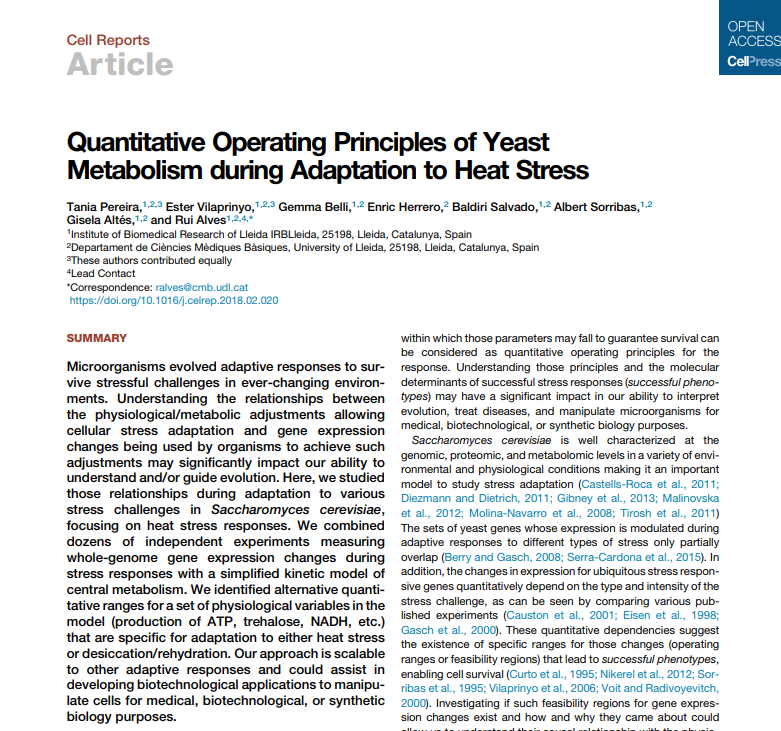Evolution of adaptive responses in yeast. New article in Cell Report
Adaptive response
Download PdfMicroorganisms evolved adaptive responses to survive stressful challenges in ever-changing environments. Understanding the relationships between the physiological/metabolic adjustments allowing cellular stress adaptation and gene expression changes being used by organisms to achieve such adjustments may significantly impact our ability to understand and/or guide evolution. Here, we studied those relationships during adaptation to various stress challenges in Saccharomyces cerevisiae, focusing on heat stress responses. We combined dozens of independent experiments measuring whole-genome gene expression changes during stress responses with a simplified kinetic model of central metabolism. We identified alternative quantitative ranges for a set of physiological variables in the model (production of ATP, trehalose, NADH, etc.) that are specific for adaptation to either heat stress or desiccation/rehydration. Our approach is scalable to other adaptive responses and could assist in developing biotechnological applications to manipulate cells for medical, biotechnological, or synthetic biology purposes.
